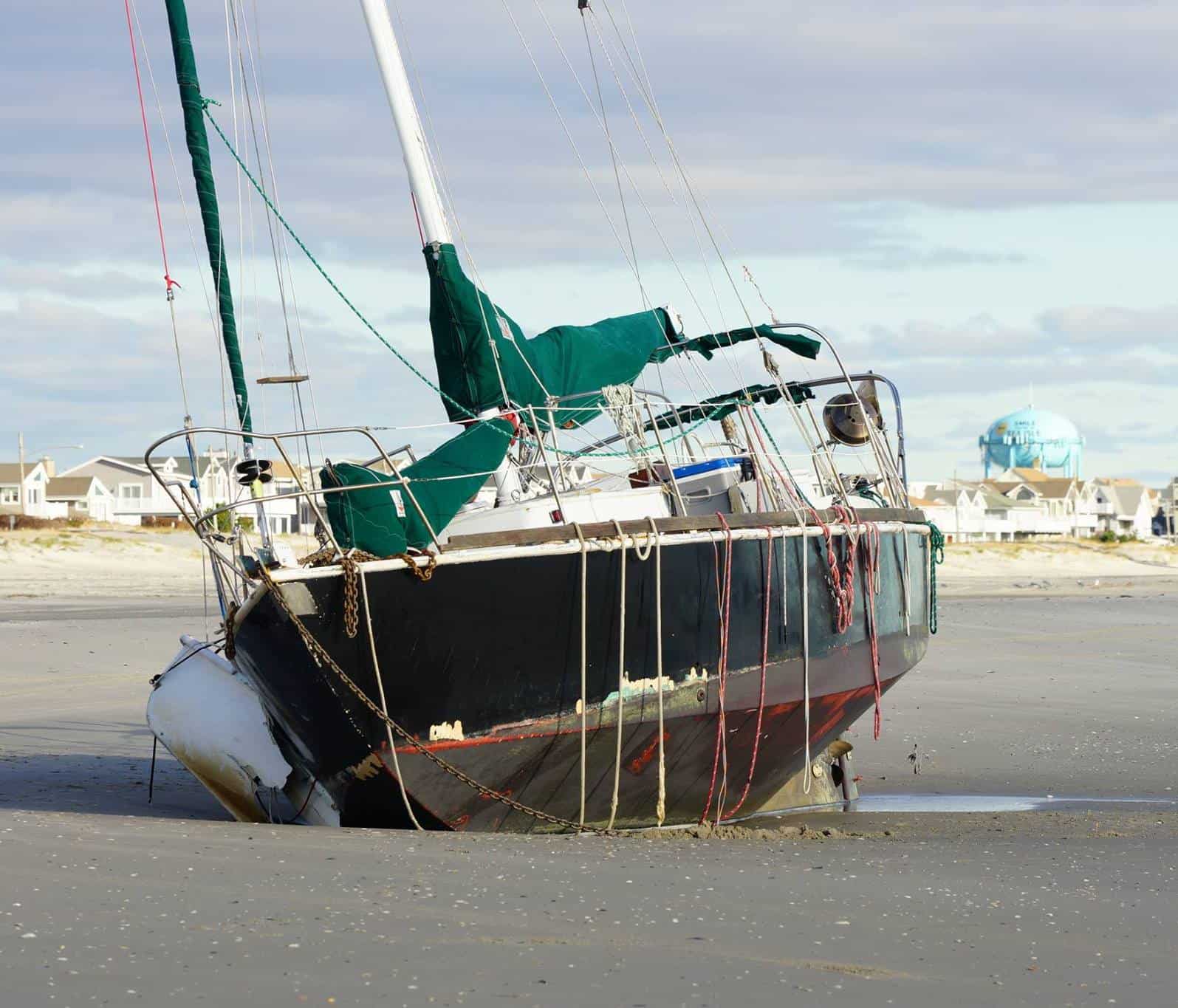Why Abandoned Boats Linger in New Jersey
New Jersey’s coastline, with its picturesque views and rich maritime culture, is grappling with a persistent challenge – abandoned beached boats. These vessels, left to weather the elements, not only mar the natural beauty of the area but also present significant environmental and navigational hazards.
What adds to the mystery of this issue is the seemingly protracted timeframe it takes for authorities to address and remove these abandoned boats.
This became very apparent with the most recent beaching of the Panache around Halloween.
The vessel was gifted to two men from a man from New England who could no longer take care of it.
The ship had no motor and so the pair tried to sail the boat around Cape May Point in the middle of the night and mistakenly beached it. The ship sat for about a month before funds were sent in via the owner to have it removed. (well it caught fire before being removed but it was still removed).

Boat Beached In Sea Isle
In some cases, these ships are left for a few months before they could be removed via owner or city expense.
Let’s delve into the factors contributing to these delays in the removal process.
Navigating Jurisdictional Waters:
One of the foremost reasons for the sluggish removal of abandoned beached boats lies in the intricate web of jurisdictional responsibilities. Coastal areas are a patchwork of federal, state, and local jurisdictions, creating a challenge in coordinating a unified response.
Various agencies, each with its own protocols, priorities, and funding sources, face bureaucratic hurdles that impede a swift removal process. The complexity of jurisdictional tangles often leaves abandoned boats stranded as authorities grapple with determining who should take the lead.

Why Abandoned Boats Linger in New Jersey
Strained Resources:
Removing abandoned boats isn’t a walk in the park; it demands substantial financial and human resources.
Local and state agencies, grappling with limited budgets allocated for environmental protection and maritime enforcement, find it challenging to promptly address this issue. The result? A backlog of abandoned boats awaiting removal, exacerbated by the additional strain on resources required for specialized equipment and expertise in the boat removal process.

The legal landscape surrounding abandoned boats adds another layer of complexity to the removal process. Determining ownership, liabilities, and the appropriate legal steps for removal is a labyrinthine task.
The absence of clear legislation dedicated to abandoned vessels often leads to legal disputes, further stalling the removal process.
Legal proceedings, notorious for being time-consuming and resource-intensive, contribute to the prolonged presence of these abandoned boats along New Jersey’s shores.

Approaching the removal of abandoned boats requires a delicate balance with environmental concerns. These vessels often carry hazardous materials such as fuel, oil, and pollutants. Authorities must meticulously plan and execute removal operations to minimize the environmental impact.
While this cautious approach is undoubtedly necessary to protect the ecosystem, it inadvertently extends the timeline for removal, as agencies work diligently to mitigate potential harm.
Also See: Royal Hawaiian Motel To Transform into Madison Resorts
Coordination Hiccups:
Efficient removal of abandoned boats necessitates seamless coordination among various stakeholders, including local governments, environmental agencies, and law enforcement. Delays rear their head when communication and collaboration break down, leading to a lack of consensus on the best course of action.
Establishing effective communication channels and collaborative frameworks becomes crucial for streamlining the removal process and preventing the persistence of these maritime eyesores.

Addressing these multifaceted problems requires a concerted effort from federal, state, and local authorities, alongside collaboration with environmental organizations and the community.
Only through a united front can New Jersey hope to swiftly clear its shores of these maritime relics and preserve the pristine beauty of its coastal areas.
